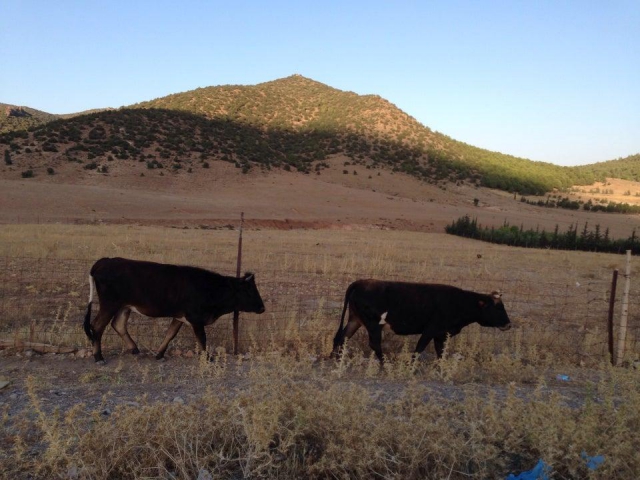Content
The Belezma National Park (in Arabic: الحظيرة الوطنية بلزمة) is one of the most significant natural treasures of Algeria. Located in the province of Batna, within the Aurès Mountains, this impressive park covers an area of over 262 square kilometers.
History of Belezma National Park
Established in 1985, Belezma National Park has been an integral part of conservation efforts in Algeria, safeguarding the local fauna and flora and providing an educational and recreational experience for visitors.
Geography and Climate
Topography
The topography of Belezma National Park is mostly mountainous, with elevations ranging between 1,000 and 2,000 meters. The mountainous areas provide a great diversity of microclimates, contributing to the rich biodiversity of the park.
Climate
Belezma experiences a Mediterranean climate, characterized by wet and cold winters and dry and hot summers.
Biodiversity
Flora
The park houses a variety of plant species, some of which are endemic and endangered. Cedars, oaks, and pines can be found here.
Fauna
Belezma National Park is home to a variety of animal species, including the Barbary macaque, wild boars, and foxes. Birds are also prominent, with numerous endemic and migratory species present.
Ecology
Ecosystems
The park is a mosaic of ecosystems, including mountain forests, meadows, and wetlands. These diverse habitats are vital for the survival of many species.
Endemic and Endangered Species
Belezma National Park serves as a refuge for several endemic and endangered species. Protecting these species is one of the main priorities of the park.
Tourism
Main Attractions
The park offers a variety of natural attractions, from impressive waterfalls to panoramic mountain views. The opportunity to observe wildlife in its natural habitat is also a significant draw.
Recreational Activities
A variety of recreational activities are available, including hiking, birdwatching, and nature photography.
Visitor Rules and Guidelines
Visitors must adhere to the park rules to ensure the protection of wildlife and the preservation of ecosystems. This includes staying on designated trails, not littering, and not disturbing local fauna.
Conservation and Park Management
Conservation Strategies
Conservation strategies in Belezma National Park include monitoring of fauna and flora, protection of critical habitats, and visitor education on the importance of conservation.
Challenges and Threats
Despite their efforts, the park faces challenges such as climate change, development pressures, and poaching. These threats require ongoing conservation solutions and efforts to ensure the survival of the park’s ecosystems.
Socio-economic Impact of Belezma National Park
Tourism-generated Revenue
Tourism in Belezma National Park generates significant income that contributes to the park’s maintenance and management, as well as local economic development.
Benefits for Local Communities
The park provides employment opportunities to local communities and contributes to the economy through tourism. Additionally, it plays an educational role, raising awareness among the local population about the importance of conservation.
Projects and Research
Current Scientific Studies
Various scientific studies are underway to better understand the park’s ecosystems and how they can be better protected. These studies encompass areas such as ecology, biology, and geography.
Future Conservation Projects
Future projects include expanding protected areas, strengthening conservation policies, and increasing environmental education initiatives.
Conclusions
Importance of Belezma National Park for Biodiversity and Conservation
Belezma National Park is a biodiversity gem and a stronghold for conservation in Algeria. Its rich biodiversity and variety of ecosystems make this park an invaluable resource for both wildlife and people.
Future of the Park
Despite challenges, the future of Belezma National Park looks promising due to conservation efforts and growing awareness of its value. Effective conservation and management of the park are essential to ensure that these precious lands and their biodiversity can be enjoyed by future generations.
Photo Gallery
Referencias
- Scheffel, Richard L.; Wernet, Susan J., eds. (1980). Natural Wonders of the World. United States of America: Reader’s Digest Association, Inc. pp. 32–33. ISBN 0-89577-087-3.
- Sattin, Anthony Ham, Nana Luckham, Anthony (2007). Algeria (1st ed.). Footscray, Vic.: Lonely Planet. p. 188. ISBN 978-1741790993. assekrem.
- "Ahaggar National Park, Saharan Algeria Region, Algeria". Algeria.com. Retrieved 27 May 2020.
Hogan, C. Michael (2009). "Painted Hunting Dog: Lycaon pictus". GlobalTwitcher.com. N. Stromberg. Archived from the original on December 9, 2010. - Busby, G. B. J. (2006). The Cheetah (Acinonyx jubatus) in Northern Africa : A Non-Invasive Genetic Study of Carnivores from the Ahaggar Mountains, Southern Algeria (PDF) (Master’s thesis). Imperial College London. Archived from the original (PDF) on 2020-09-21. Retrieved 2010-09-22.
- Busby, G. B. J.; Gottelli, D.; Durant, S.; et al. (November 2006). "A Report from the Sahelo Saharan Interest Group – Office du Parc National de l’Ahaggar Survey, Algeria (March 2005) – Part 5: Using Molecular Genetics to study the Presence of Endangered Carnivores" (PDF). Unpublished Report. Archived from the original (PDF) on 2016-03-04. Retrieved 2010-09-22.
- Belbachir, F.; Pettorelli, N.; Wacher, T.; Belbachir-Bazi, A. & Durant, S.M. (2015). "Monitoring rarity: the critically endangered Saharan cheetah as a flagship species for a threatened ecosystem". PLOS ONE. 10 (1): e0115136. Bibcode:2015PLoSO..1015136B. doi:10.1371/journal.pone.0115136. PMC 4309643. PMID 25629400.
- Agence France-Presse (24 May 2020). "Critically Endangered Saharan Cheetah Seen in Algeria For The First Time in a Decade". Sciencealert.com. Retrieved 27 May 2020.
- Brito, J. C.; Martínez-Freiría, F.; Sierra, P.; et al. (2011). "Crocodiles in the Sahara Desert: An Update of Distribution, Habitats and Population Status for Conservation Planning in Mauritania". PLOS One. 6 (2): e14734. Bibcode:2011PLoSO…614734B. CiteSeerX 10.1.1.293.4325. doi:10.1371/journal.pone.0014734. PMC 3045445. PMID 21364897.
- Haggett, Peter (2001). Encyclopedia of World Geography. Marshall Cavendish. ISBN 0-7614-7289-4.
Ham, Anthony (2007). Algeria. Lonely Planet. p. 188.




